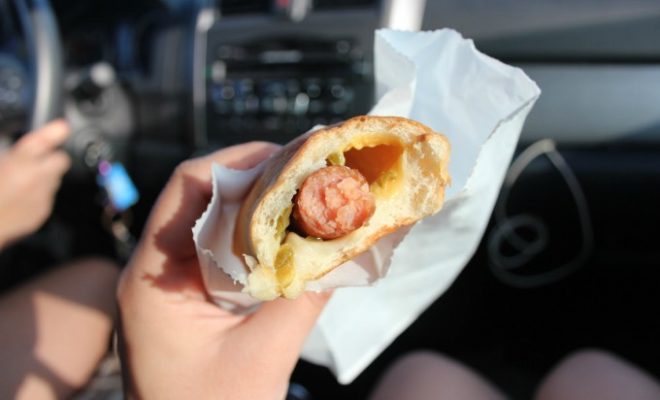Haven’t you heard? Kolaches are suddenly trendy and are considered the “new donut.” This familiar Czech pastry has recently taken over the country but remains a staple for those native to Texas. A fixture at many Czech weddings and family reunions, the rest of the world is finally discovering this sweet little fruit-filled treat and they can’t get enough. But, there seems to be some confusion about the difference between the traditional sweet kolache and its more contemporary, savory sausage-filled cousin.
Lifestyle
Don’t Call It a Kolache: The Difference Between a Kolache and Klobasniky
Origin of the Kolache

Photo: Flickr/Whitney
The word kolache is derived from the Czech word, kola, meaning “wheels” or “rounds,” referring to the shape of the pastry. Arriving in Texas along with the thousands of immigrants from Czechoslovakia in the 1800s, the kolache is a staple of the Czech culture. Most of Texas’ Czech settlers and their beloved kolache recipes originated in the Moravia region of Czechoslovakia, so it’s safe to say that Moravia is the real birthplace of the fruit-filled kolache that we all know and love.
A Czech Family Tradition

Photo: Flickr/Luna715
Traditionally, in Czech families, kolaches were made at home – often on a weekly basis (if not more often). Each Czech family has their own twist on the recipe that likely evolved through the years based on the fluctuating availability of local produce or pantry staples due to that year’s harvest or the economy. Kolaches were made with a sweet yeast dough, hollowed in the center, filled with fruit and eaten as an afternoon snack. Fillings were typically apricots, poppy seeds, prunes, and cherries – all available locally in Eastern Europe.
Don’t Call it a Kolache!

Photo: Flickr/Viviandnguyen
These sweet treats are all well and good, but what about those of us with a man-sized hunger? Who doesn’t love those savory, sausage, cheese and jalapeno “kolaches” that are probably even more common in our state? What would you say if we told you that those aren’t kolaches at all? Mind blown. In fact, these meat-filled pastries didn’t come over from Czechoslovakia at all. They’re a completely Texan creation and they’re called Klobasniky, (pronounced klo-bah-SNEEK-ee) meaning “little sausage.”
Origin of the Klobasniky

Photo: Flickr/Terry Feuerborn
Rumor has it that this version of a pig in a blanket, the klobasniky, was invented in the famous bakery located in the town of West, Texas called The Village Bakery. According to The Village Bakery, the klobasniky was born in 1953 when kielbasa sausage collided with Grandmother Honey’s Old World kolache dough recipe. Texas’ pastry options haven’t been the same since.
So, the next time someone at the office offers to go pick up breakfast and asks if you want fruit or sausage kolaches, offer them a little (unsolicited) history lesson. Tell them about the original kolaches, native to Moravia, created using a sweet, yeast dough and filled with fruit. Then, educate them on the origin of the klobasniky and its birth in the town of West, Texas.
If you still have friends after that little history lesson, plan a trip to Hallettsville, Texas, the last Saturday in September for Kolache Fest, featuring tons of kolaches, music, and fun. What better thing to celebrate than a delicious pastry, rich in culture and history that has drawn families together for generations?


